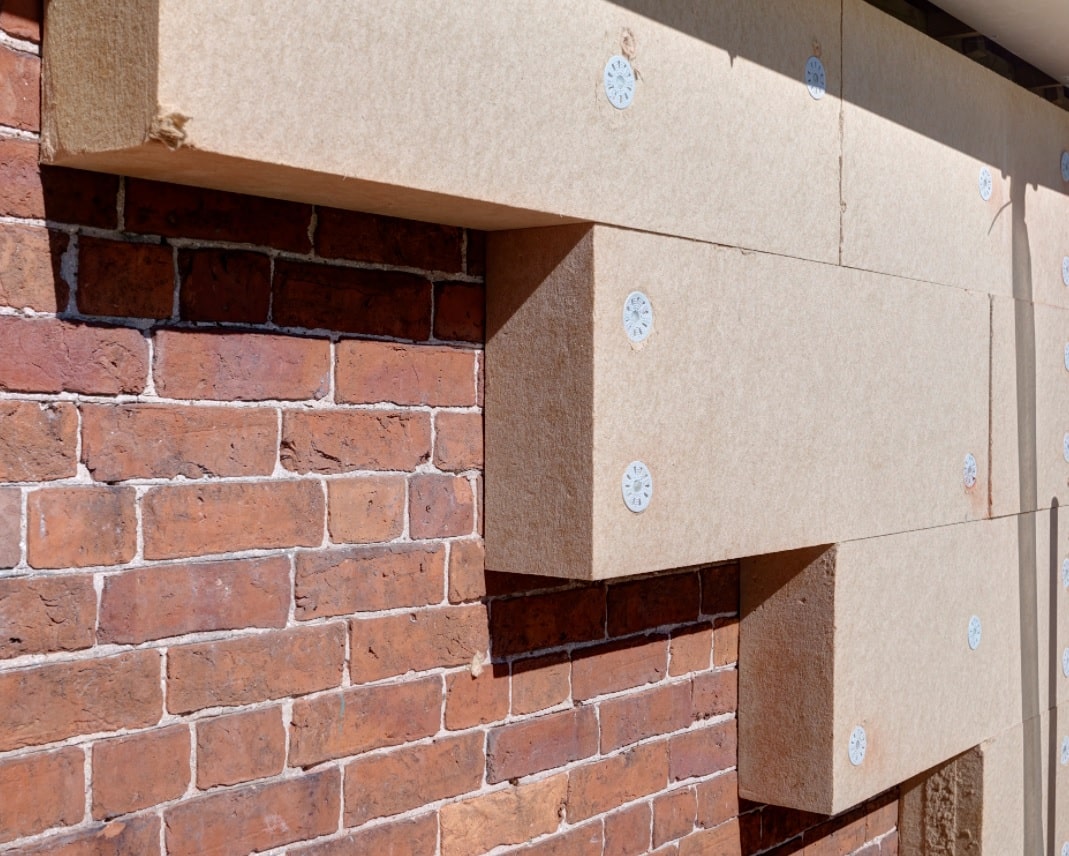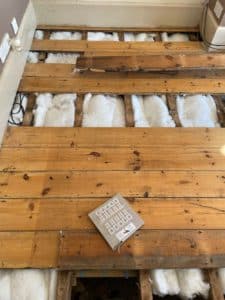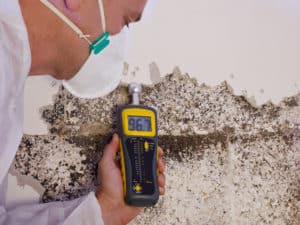Low carbon retrofitting is a new scheme within the UK that focuses on improving the energy efficiency of older homes, helping them to become net zero and reach their full energy efficiency potential.
With a focus on the construction industry and the UK becoming net zero, there’s a myriad of ways we can all reduce our energy efficiency… Which of course is a great thing! There’s loads of amazing schemes and regulations out there to consider, but where do you start? Which one is best for you?
Around 18% of our annual national CO2 emissions come from existing homes and the majority of these homes will still be standing in 2050. Due to the high impact, low carbon retrofits are becoming an increasingly popular way to hit Net Zero within the construction industry. If we aim to hit Net Zero by 2030, one million homes will need to be retrofitted in the next 30 years. But, if they are retrofitted well, occupants can enjoy environmental, social and economic benefits.
But, there’s a lot to consider, including barriers and the best course of action for personal projects, however, we will go into detail through this guide on what is best for you.
What is a low carbon retrofit and why do we need them?
Low carbon retrofits are used within the construction industry to improve an existing building with the aim of making the home more energy efficient. As many homes within the UK, especially older builds, are prone to damp, condensation, draughts and insulations, low carbon retrofits focus on improving fabrics and systems to improve energy efficiency and reduce emissions. Low carbon retrofits have been introduced to help meet the UK target of reducing carbon emissions by 2050. In other words, retrofits will help to meet net-zero goals, improve efficiency and decrease energy bill prices.
With a £6.6 billion investment into the improvement of energy efficient buildings, the focus has been on older builds, however it’s important to note that the government has now introduced new regulations that focus on the CO2 emissions from newly built homes needing to be around 30% lower than the current standards. Ultimately, whether it’s a new build or retrofitting an older build, all of this work is helping the construction industry to help meet net zero targets quicker.
What barriers exist for low carbon retrofits?
Although low carbon retrofits can be great for reducing energy efficiency, there are some barriers to consider.
Financial barriers
Whilst Low carbon retrofits can save you money in the long run, they can be an expensive task and shouldn’t be taken lightly.
Technology barriers
Technological barriers such as lack of knowledge, building constraints, occupier disruption, compatibility with existing systems and insufficient understanding of analysis and planning need to be considered.
Policy barriers
Unfortunately, there has been an insufficient focus on existing building stock compared to new builds meaning there’s a lack of regulation or government intervention to stimulate retrofits.
Commercial barriers
Failing to provide a compelling and viable case for investment in retrofits can also be a commercial barrier. Areas such as payment to service providers, the cost for occupiers and risks involved can create issues beforehand.
What are the overarching low carbon retrofit principles?
There’s six low carbon retrofit principles that developers need to follow when starting their own retrofit project.
- Reduce energy consumption
- Prioritise occupant and building heath
- Plan the building retrofit
- Track performance
- Think big
- Consider the impact on embodied carbon
As planning is a huge element of low carbon retrofitting, the LETI guidance guide has outlined what should be in a house retrofit plan:
- Set out key building information, constraints, risks and opportunities
- Set out the key works proposed along with related strategies and details
- Set out the sequence of the retrofit work
- Make sure to be appropriate in the plan’s level of detail and intervention for the project
- Include monitoring and reporting energy consumption
- Stay with the building
To find out more, check out LETI’s Climate Emergency Retrofit Guide which goes into more detail about the principles and what you need to do to plan your retrofit project for success.
How can I reduce embodied carbon in my retrofit project?
When reducing your embodied carbon, the consideration and assessment needs to start as early as possible during the planning and design phases. There is a chance to reduce embodied carbon by up to 20% without increasing costs by looking into areas such as materials and waste reduction.
Use low carbon materials
Eco-friendly materials are becoming increasingly popular in construction areas such as production and maintenance. They are a great way to reduce carbon emissions and help developers become as sustainable as possible. Materials include wood, aluminium, recycled glass bricks, ashcrete and much more. The chosen material will depend on whether the project focuses on insulation, foundations, windows or bricks.
Buy local
The transportation of materials is typically an area that gets forgotten when it comes to embodied carbon within retrofits, but it’s an important consideration. The transportation from the factory to the building site unfortunately does add up the embodied carbon of your building, but buying locally will help to reduce emissions and support the local economy.
Reduce waste
It is the construction industry’s responsibility to reduce construction and demolition waste. Demolition of buildings has an enormous impact on the amount of waste produced through each building’s lifetime. To reduce waste, using low impact materials that are sustainability sourced and reused from other projects as well as sustainable recycling at every stage of the construction process.
Consider the life cycle of your materials and products
Purchasing cheap materials might be a good idea at first, however it can be quite expensive later down the line as materials need replacing more frequently. Replacing materials means adding to the carbon emissions of the building account, taking steps back in the route to net zero.
Educate, educate, educate!
It’s essential that you keep yourself informed on changes within the industry and on new government regulations so you are able to take advantage of new findings to help make your build as energy efficient as possible. There’s loads of workshops and papers such as the LETI’s Climate Emergency Retrofit Guide that will keep you up to date and knowledgeable.
RELATED: 7 PRINCIPLES OF SUSTAINABLE CONSTRUCTION
Can Buildpass help me with my low carbon retrofit project?
Yes! We offer consultations on the PAS 2035 and Passivhaus standard, all schemes surrounding standards for refurbishments of existing domestic properties. We can help you explore whether a retrofit is the perfect journey for you. If you are ready to find out more about low carbon retrofitting, get booked in for a call with the Buildpass team now.




















